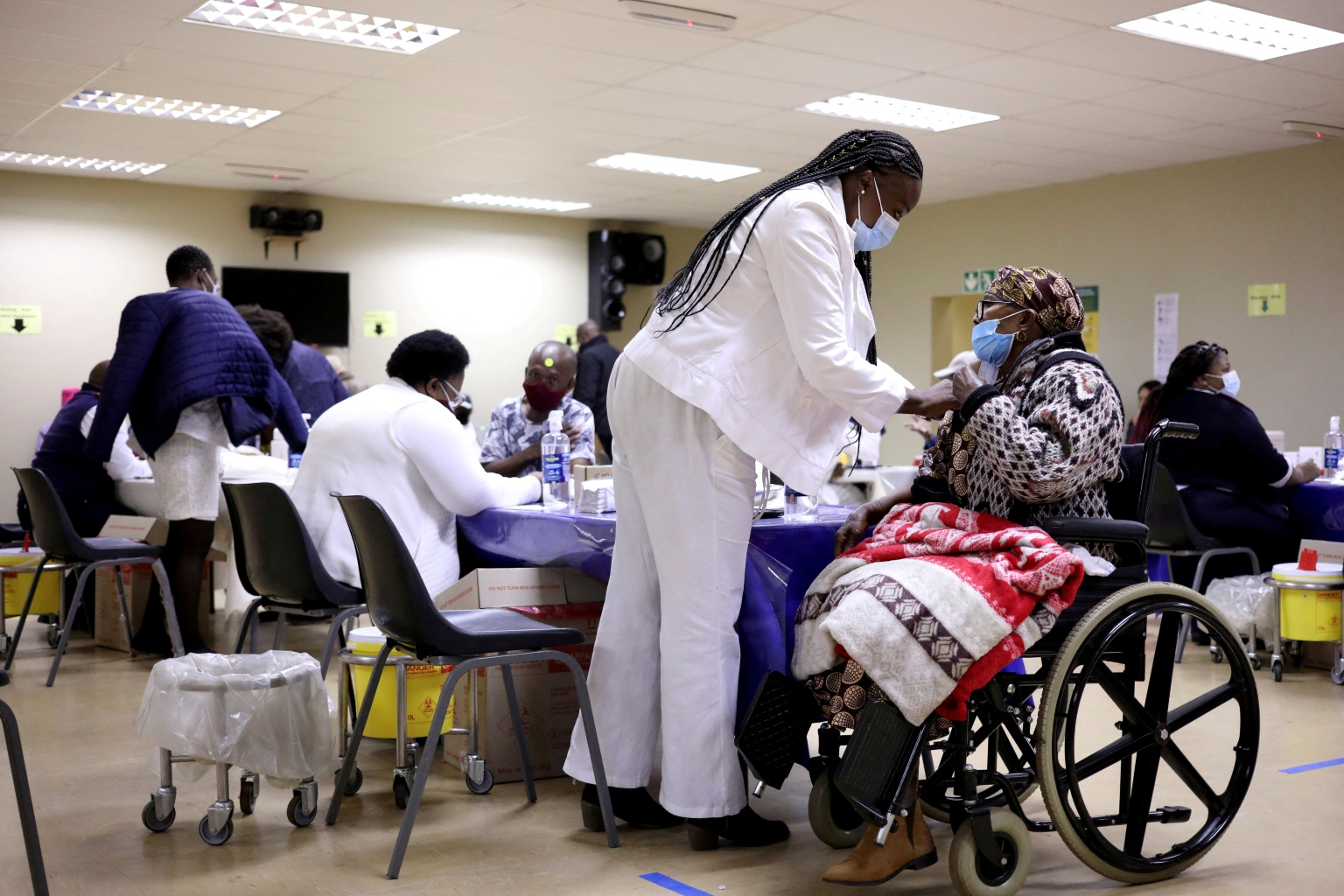South Africa's latest surge a preview of Covid-19's next chapter?
Sign up now: Get ST's newsletters delivered to your inbox

South Africa's case count has tripled and hospitalisations have increased in a sign of a possible fifth wave.
PHOTO: REUTERS
Follow topic:
DURBAN (NYTIMES) - Coronavirus cases are surging again in South Africa, and public health experts are monitoring the situation, eager to know what is driving the spike, what it says about immunity from previous infections and what its implications are globally.
South Africa experienced a decline in cases after hitting an Omicron-fuelled pandemic peak in December.
But in the past week, cases have tripled, positivity rates are up and hospitalisations have also increased, health officials said. The surge has the country facing a possible fifth wave.
The spike is linked to BA.4 and BA.5, two sub-variants that are part of the Omicron family.
Professor Tulio de Oliveira, director of South Africa's KwaZulu-Natal Research Innovation and Sequencing Platform, said BA.4 and BA.5 demonstrate how the virus is evolving differently as global immunity increases.
"What we are seeing now, or at least maybe the first signs, is not completely new variants emerging, but current variants are starting to create lineages of themselves," Prof de Oliveira said.
Since its initial identification in South Africa and Botswana in November, Omicron has produced several sub-variants.
Some scientists are trying to understand what the BA.4 and BA.5 spike in South Africa, which is concentrated mainly in the Gauteng, Western Cape and KwaZulu-Natal provinces, says about immunity from previous Omicron infections.
The highly contagious Omicron variant first appeared in South Africa late last year, then quickly spread globally.
In South Africa, researchers estimate about 90 per cent of the population has some immunity, in part from inoculation but largely because of previous infection. But immunity from infection typically begins to wane at three months.
It is natural to see reinfection at this stage, particularly given people's changing behaviours, like less mask wearing and more travelling, said Dr Ali Mokdad, a public health researcher at the University of Washington, and formerly of the Centres for Disease Control and Prevention.
Emerging data show that in unvaccinated people, BA.4 and BA.5 evade natural defences produced from an infection with the original Omicron variant, known as BA.1, which sent case counts skyrocketing in South Africa last winter, Prof de Oliveira said.
The result is symptomatic infections with the new sub-variants.
"That is the reason why it is starting to fuel a wave in South Africa," Prof de Oliveira said.
Scientists are still studying whether this new wave creates milder or more severe illness, and it is unclear if the two sub-variants could surge elsewhere in the world.
"We are at an awkward global moment where the past can't really predict the future," said Dr Kavita Patel, a primary care physician who led the pandemic preparedness response for the H1N1 swine flu virus during the Obama administration.
The familiar patterns – a wave in one country means another wave elsewhere – no longer necessarily work like clockwork, Dr Patel said.
But monitoring situations and data coming out of countries like South Africa offers reliable signals to understanding the evolution of the virus.
Currently, another Omicron sub-variant, BA.2, is dominant in the United States, with BA.2.12.1 gaining speed as well, although public health officials have identified BA.4 and BA.5 circulating at low levels.
Whatever the dominant variant, "the lesson here is stopping transmission is the most important", said Dr Eric Feigl-Ding, a public health researcher who is the chief of the Covid-19 task force at the World Health Network.

